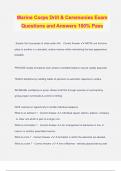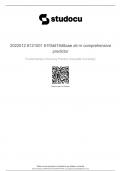Samenvatting
Project Management Summary - 2019 (Book Marchewka and all relevant papers, guestlectures)
- Instelling
- Tilburg University (UVT)
This summary has been conducted based on of all chapters of Marchewka, J. T. (2015). Information technology project management and all relevant papers and guest lectures. The summary will be updated, when the last 2 lectures have additional information.
[Meer zien]














